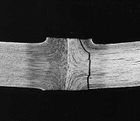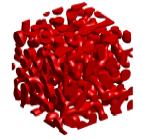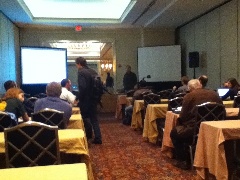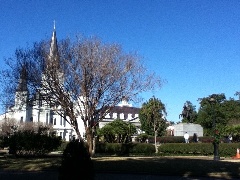This site is being phased out.
Computational topology
Redirect to:
Contents
Introduction
Computational topology studies the applied aspects of topology.
The two main topics in my view are
- image analysis, and
- data analysis.
The main tool used in computational topology is
and its extension specifically designed for certain applications:
In order to include such an important area as
persistent homology has been further developed into:
In addition to the applied angle, the numerical/algorithmic aspect is also very important in computational topology. One has several choices of
and for digital images:
and especially
Note 1: It seems fair to say:
computational topology = applied algebraic topology,
since point-set topology isn't computational at all.
Note 2: Following the idea that calculus is topology one should also include Discrete exterior calculus.
Computational topology short course 2011
This is a description of the short course “Computational Topology” conducted by the American Mathematical Society in New Orleans, January 4 and 5, 2011:
"Computational topology has developed in response to the need for topological methods in these areas:
- Robotics: capturing the connectivity of the configuration space of a robot in order to plan optimal trajectories.
- Computational structural biology: finding optimal trajectories within the conformation space of a protein to define its folding path.
- Computer graphics: reconstructing surfaces.
- Data mining: robust analysis of noisy, high-dimensional, heterogeneous, sampled data."
Lectures
- Topological Data Analysis by Afra Zomorodian
- Persistent Topology by Gunnar Carlsson
- Topological Dynamics: Rigorous Numerics via Cubical Homology by Marian Mrozek
- Euler Calculus for Sensor Data by Robert Ghrist
- Topology in Robotics: Planning with Uncertainty by Michael Erdmann
- Optimization of Cycles and Bases by Jeff Erickson
Analysis of digital images wasn't discussed... Fortunately, I just finished a draft of a paper on this exact subject. It's called Homology groups of filtrations. Broadly, this is my view on persistent homology.
Robert Grist suggested that computational topology will go through the same stages as dynamical systems did in the 60s and 70s as it became common in engineering. Judging by the lectures, to become truly applied computational topology will need 10-20 years.
History
Algebraic topology has a long history in pure mathematics. However, its applied and computational aspects have been obscured, see Algebraic topology and digital image analysis.
Herbert Edelsbrunner is usually credited for starting computational topology as a field within applied mathematics around 2000.
I attended the first Computational topology short course in 2004. It was run by Herbert Edelsbrunner and John Harer in the Institute for Mathematics and Its Applications located on campus of the University of Minnesota. After the course I became convinced that algebraic topology would have serious industrial applications. It took me another year to find my personal interest - digital image analysis.
I attended it in June 2009 another IMA short course. It was called Applied algebraic topology. A lot more about the course can be found at this site: IMA New Directions Short Course Applied Algebraic Topology.
Reading
You can just start reading the links in the next section, but there are also a few books:
- Computational Homology by Kaczynski, Mischaikow, Mrozek
- Topology for Computing by Zomorodian
- Computational Topology by Edelsbrunner and Harer
Compare to these:
- Digital Geometry: Geometric Methods for Digital Image Analysis by Klette and Rosenfeld is quite advanced. Yet it devotes a just single page to homology.
- Volumetric Image Analysis by Lohmann is an advanced book. It is focused on geometry of 3D images with some basic facts about topology (no homology).






